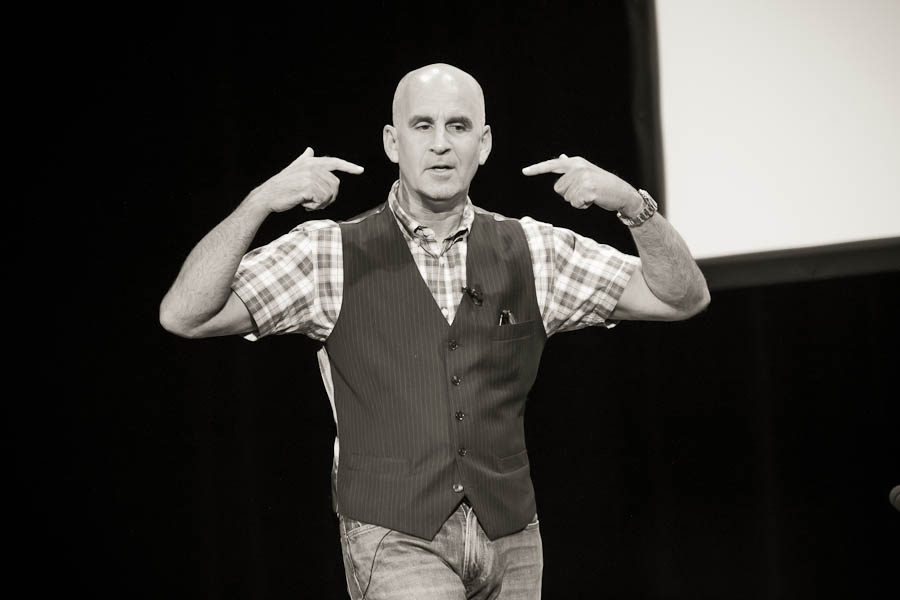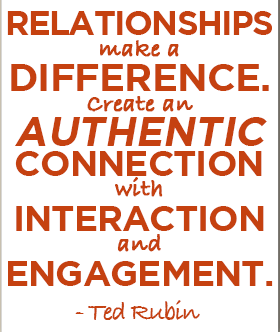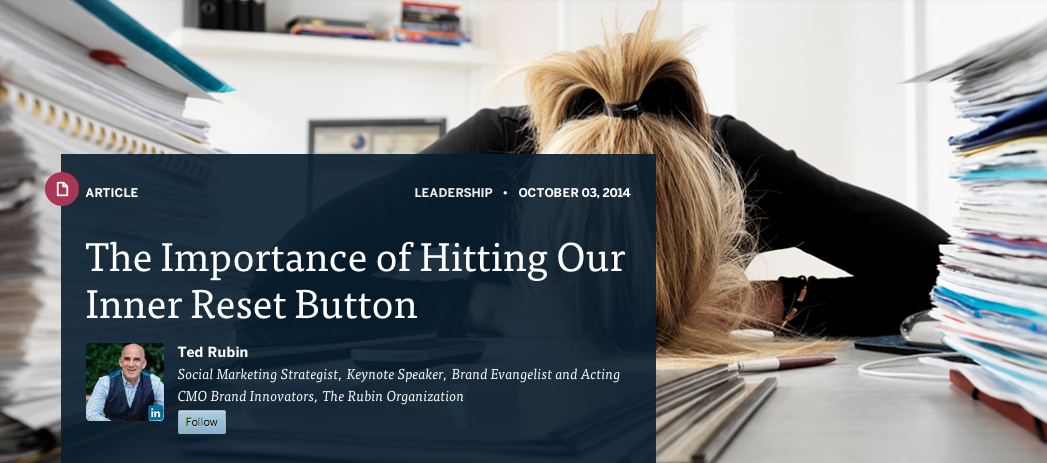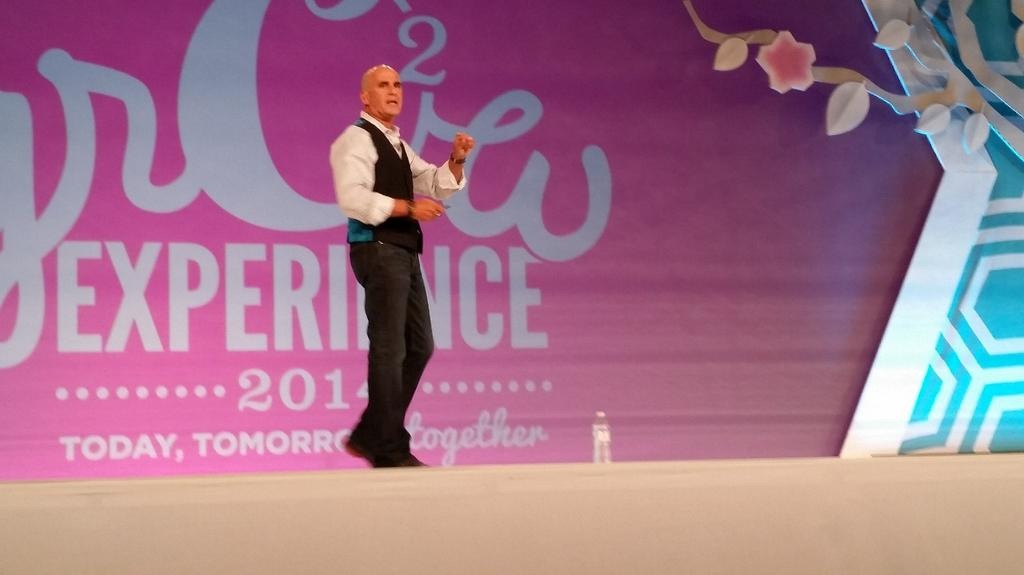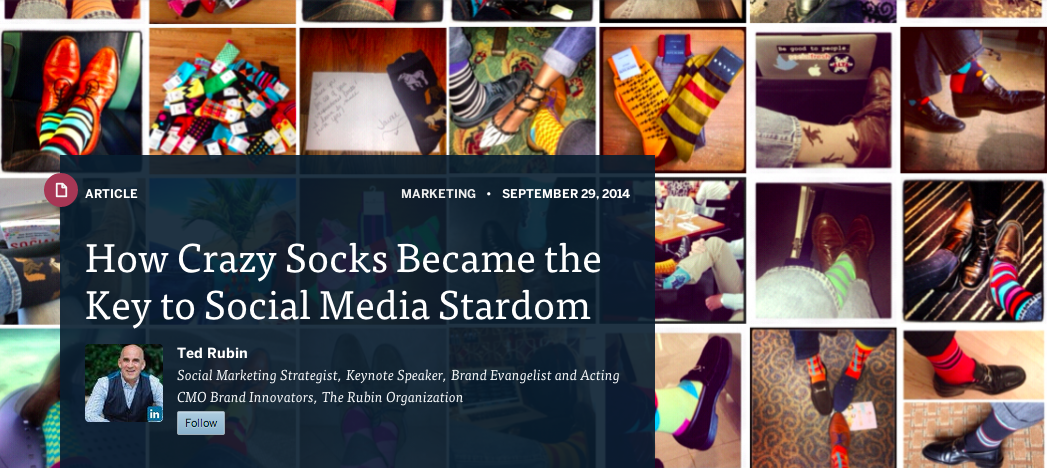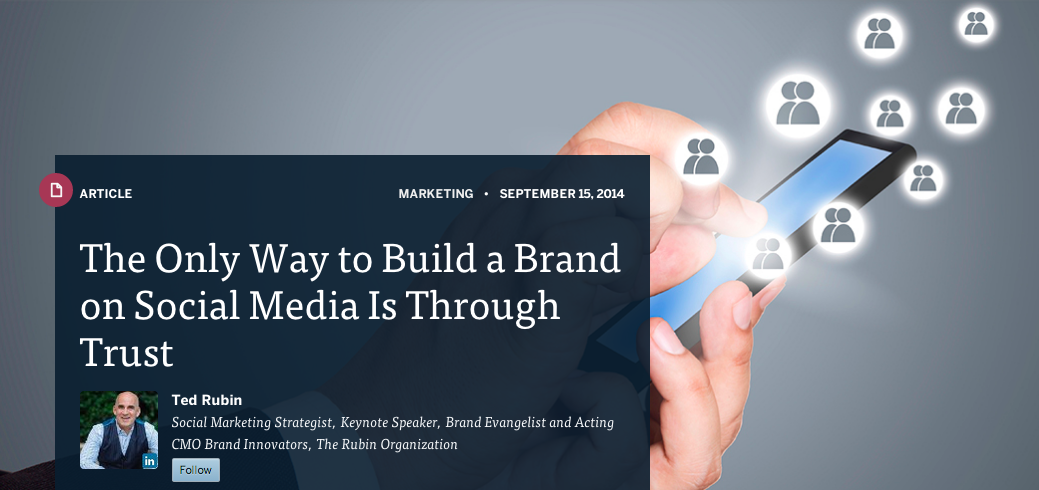The most important lesson I learned about failure is that without it, you do not truly understand success. When success comes too easily or too early in the process, we come to believe it is the natural state of things, and when failure comes at a later date in some form or another we are most often utterly unprepared.
TedRubin
Don’t Tell Me You Don’t “Do” Business Cards
Don’t tell me you don’t “do” business cards. I suggest… you “do” them. It’s about connection and relationships. #RonR. I posted this to Facebook, Google+ and LinkedIn and the following conversation transpired. I add more depth to my statement in the comments below. Thought it worthwhile to give it all a home here.
Twitter and Friendship
For me Twitter and new friends have gone hand-in-hand from the beginning. And I’m not just talking about gaining followers here—I’m talking about true connection, forming relationships and making things happen. I’ve never “bought” a single Twitter follower for any of my profiles, yet I’ve amassed over 700,000 followers to date (and I’ve been active since Q4 2008). How did I do it? By making a conscious effort to connect, converse, and add value always with an eye to building relationships.
The Importance of Hitting Our Inner Reset Button
——-
Our brains process five times the information they did 20 years ago. Here’s how you can help your brain adapt to information overload, and remain creative and productive.
Here’s a question for you: How many of the following scenarios can you identify with?
- I feel guilty when I’m not working.
- I often pull all-nighters on projects but don’t get as far as I should on them.
- I feel the need to prop up my idea-flow with caffeine.
- I check my email even on my days off and during vacation.
- Doing what I’m doing used to be fun—now it’s difficult to stay energized.
- I’m less organized than I used to be and find myself procrastinating more.
- I often wake up in the middle of the night with anxiety.
- I pick up colds and flu very easily.
If it seems you’re busier than ever, yet struggle with productivity—and one or more of the above scenarios sounds awfully familiar—you’re not alone. Today we’re more plugged in than ever before in history, and we’re paying a price—mental, emotional and physical burnout.
Balancing Act
We have more difficulty staying focused. We have trouble disengaging from work. We experience more stress-related health problems. In an INSEAD research paper,“Doing Nothing and Nothing to Do: The Hidden Value of Empty Time and Boredom,”author Manfred F.R. Kets de Vries writes: “The ability to balance activity and solitude, noise and quietness, is an excellent means to tap our inner creative resources. The secret of truly successful, creative people may well be that they learned very early in life how not to be busy.”
Does this mean you should chuck work and “Zen” your way to success? Of course not. But there’s a critical balance that seems to be missing from our lives, especially if we have a tendency to be workaholics.
Information Overload
Every day, we take in about 174 newspapers’ worth of information (five times as much as we did 20 years ago), and watch an average of five hours of TV. That’s a lot to process, and our brains have a hard time taking it all in. On top of that, thanks to our plugged-in lifestyle, we take less true vacation time and work more hours—neither of which helps us be more productive.
I read an interesting article in The New York Times Sunday Review recently called“Hit the Reset Button in Your Brain.” The article was written by Daniel J. Levitin, author of The Organized Mind: Thinking Straight in the Age of Information Overload, which explains that the human brain has evolved into two separate “attention” systems that help us sift through information and sort it into two areas: the task-positive and task-negative networks.
The task-positive network is active when you’re focused on a specific task and engaged in it without distraction. The task-negative network, on the other hand, is active when your mind is wandering or daydreaming. That’s where inspiration and creativity come from. Then there’s a third component, an attention filter, which acts like a switch between the task-positive and task-negative networks. The filter helps orient us and tells us what to pay attention and what to ignore in any given moment.
Over the years, we’ve developed shorter attention spans because we’re constantly being bombarded by incoming information, which, in effect, activates that switch. So if you’re constantly getting notifications for email, Facebook, Twitter, etc., you’re constantly see-sawing back and forth too often between what’s critical and what’s not.
Deliberate Immersion
Levitin suggests we need to lay off that switch by segmenting our daily activities into time slots and immersing ourselves in a single task for a sustained period, like 30 to 50 minutes without distractions. The same goes for immersing ourselves in task-negative activities like exercise, walking in the woods or listening to music, which all help trigger the mind-wandering, daydreaming mode that leads to creativity and resets our brain to provide perspective on what we’re doing.
Chances are, you’ll have to train yourself to do this; however, regular bouts of downtime where you’re not constantly plugged into task-positive activities is not only good for the brain, it’s good for your body, too. The same can be said for taking real vacations (not working during your holidays). I know that taking frequent breaks and putting myself in the moment when I’m on a holiday really helps me focus and also creates a more positive frame of mind when I’m back at work.
The human brain is a marvel of creation. When we treat it right and stop abusing it, wonderful things can happen. If we all hit our “reset” button more deliberately and more often, just think of what we could accomplish together.
Photo: Getty Images
Originally posted OCTOBER 3, 2014 American Express OPEN Forum
So what does it take to get the Small Business involved in Social Media?
Well, extra time (possibly the biggest barrier), money (but really not much) and people. With social media being so time intensive, and best results coming from directly being involved, the barriers to entry get higher as a business gets smaller, but not insurmountable for those willing to put in the time, especially since it can be done at all hours, and some of the most effective times to connect via social media are very early in the morning and very late at night.
How Crazy Socks Became the Key…
If you’re struggling with how to build your personal brand online, you may find inspiration in this expert’s branding story.
Without Context, Influence Falls Flat ~via @InsideCXM
When you’re looking for social influencers in your niche to connect with and engage, where do you start? Most people make a beeline for the flashy, neon lights of the follower count. While that mayseem a logical place to start, it’s really a flawed metric.
Customer Experience Q & A with @SDL
What excites you about customer experience?
It is not customer experience that excites me, it is the customer herself who excites me, and the relationship that will develop and lead to trust and loyalty.
The Only Way to Build a Brand on Social Media is Through Trust
—–Whether you’re building your personal brand, your business brand or both, one thing remains true: You need content to help you build trust and followers.
How to Market to Women Using Social Media
Many women pride themselves on being savvy consumers who can sniff out a poseur brand. Brands need to be the conduit for information to women from other women and from experts, but be wary of star power – celebrities don’t cut it. Marketers that have a woman’s trust have worked to earn it, by making good products, offering relevant advice and engaging those women. All peers have influence to some degree, especially when marketing to women so the more you understand and relate to the community the better off the brand. If you market to women. recognize and benefit from the value women place on authenticity. Women are busy with multiple responsibilities so keep your site’s navigation intuitive and simple, and keep your message clear and concise.
